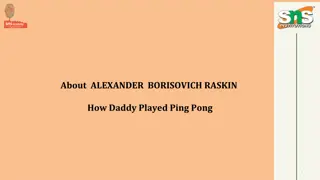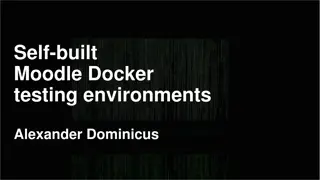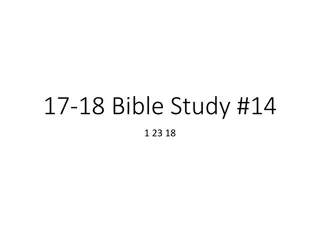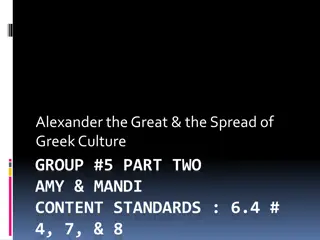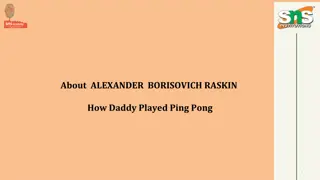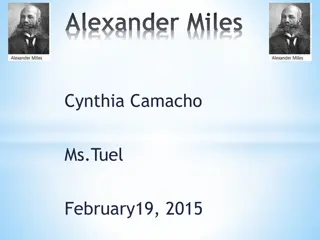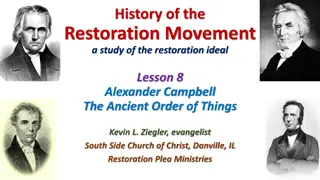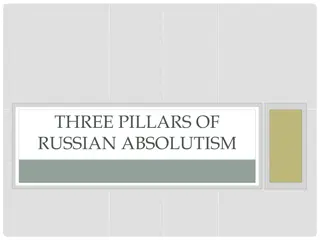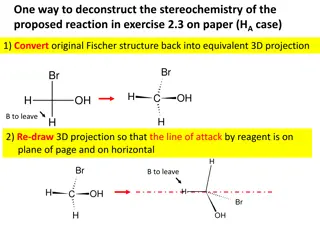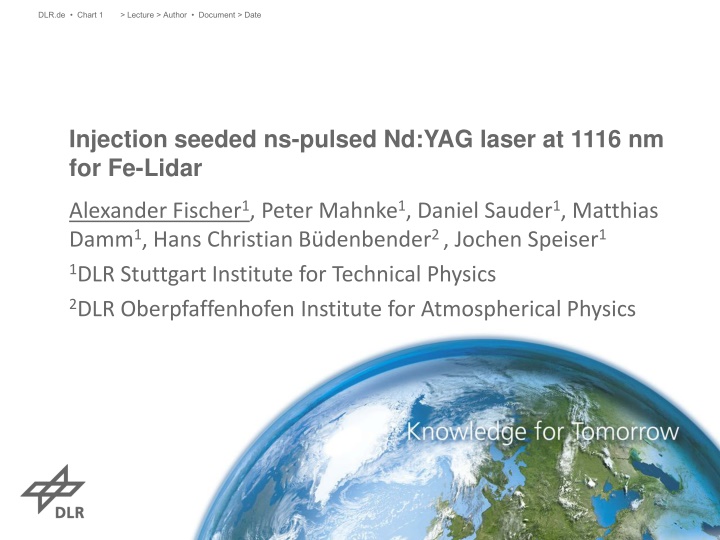
Advanced Nd:YAG Laser Systems for Fe-Lidar Research
Explore the cutting-edge Nd:YAG laser technology developed by DLR for Fe-Lidar research applications. Discover the generation of 372 nm lasers, challenges with emission cross-sections, and the latest advancements in airborne Lidar systems for studying the middle atmosphere. Gain insights into the motivation behind these innovations and the goals for compact, efficient laser systems. Stay informed about the latest developments in laser technology for atmospheric research.
Download Presentation

Please find below an Image/Link to download the presentation.
The content on the website is provided AS IS for your information and personal use only. It may not be sold, licensed, or shared on other websites without obtaining consent from the author. If you encounter any issues during the download, it is possible that the publisher has removed the file from their server.
You are allowed to download the files provided on this website for personal or commercial use, subject to the condition that they are used lawfully. All files are the property of their respective owners.
The content on the website is provided AS IS for your information and personal use only. It may not be sold, licensed, or shared on other websites without obtaining consent from the author.
E N D
Presentation Transcript
DLR.de Chart 1 > Lecture > Author Document > Date Injection seeded ns-pulsed Nd:YAG laser at 1116 nm for Fe-Lidar Alexander Fischer1, Peter Mahnke1, Daniel Sauder1, Matthias Damm1, Hans Christian B denbender2 , Jochen Speiser1 1DLR Stuttgart Institute for Technical Physics 2DLR Oberpfaffenhofen Institute for Atmospherical Physics
DLR.de Chart 2 > Lecture > Author Document > Date Motivation Alima: Airborne Lidar for studying the middle atmosphere Cooperation with DLR Oberpfaffenhofen PA-LID Iron in the upper atmosphere (50-100 km) Fluorescence line of 372 nm suitable for resonance Lidar Analysis of the line gives information about air velocity, temperature, gravity waves Goal: compact, airborne system Gelbwachs J., Appl. Opt. 33, 7151 (1994) Gardner et al, Geophys. Res. Lett. 27, 1199 (2001) Chu et al, Appl. Opt. 41, 4400 (2002) Kaifler et al. ;New Lidar Systems at the German Aerospace Center, LPMR 2015
DLR.de Chart 3 > Lecture > Author Document > Date Generation of 372 nm: existing system 100 mJ ~60 ns 34 Hz 3 W 372 nm 2 744 nm Alexandrite laser single frequency Chu et al., Appl. Opt. 21, 4400 (2002) developed by the NCAR Disadvantage: small emission cross section, needs heating strong pumping source needed
DLR.de Chart 4 > Lecture > Author Document > Date Generation of 372 nm: OPO 1116 nm 558 nm 532 nm 2 2 3 372 nm >50 mJ 1064 nm OPO single frequency Nd:YAG 1 J, 100 Hz, 10 ns commercially available disadvantages: not very efficient danger of damage of optics due to high pulse energies
DLR.de Chart 5 > Lecture > Author Document > Date Generation of 372 nm: resonator at 1116 nm 2 3 1116 nm single frequency >15 mJ, 100 Hz, <100 ns amplifier system >150 mJ 372 nm, >50 mJ can be realized very compact avoids very high pulse energies small cooling system required
DLR.de Chart 6 > Lecture > Author Document > Date Nd:YAG laser line at 1116 nm emission cross sections: challenges with 1116 nm: ~7 times lower amplification than with 1064 nm supression of 1064 nm 1064 = 2,8*10-19 cm 1116 = 0,42*10-19 cm Alexandrite 744 = 0,07*10-19 cm (295 K) and 0,30*10-19 cm (463 K) Marling, IEEE J. Quant. Electron, 14, 56 (1978) Wang et al.; Appl. Phys B (2011) 104:45 52 Huan et al.; Chin. Phys. B Vol. 21, No. 10 (2012) 104208 Zhang et al.; CHIN. PHYS. LETT. Vol. 30, No. 10 (2013) 104202
DLR.de Chart 7 > Lecture > Author Document > Date Realisation of the resonator to experiment/ frequency conversion etalon /4 plate /4 plate TFP Pockels cell end mirror end mirror pump chamber with Nd:YAG crystal seed laser side pumped setup injection seeded resonator length ~110 cm pump duration 300 s @ 100 Hz diode laser @ 1116 nm cw, 5 mW, single frequency
DLR.de Chart 8 > Lecture > Author Document > Date Injection Seeding etalon /4 plate /4 plate TFP Pockels cell end mirror end mirror pump chamber with Nd:YAG crystal no stabilization seed laser (bad parameters) (2 modes) Need for stabilization of the resonator length to get proper seeding single frequency
DLR.de Chart 9 > Lecture > Author Document > Date Feedback-looped Stabilzation end mirror with piezo /4 plate /4 plate photodiode TFP pump chamber with Nd:YAG crystal seed laser Build-up-time feedback control Folie mit vorher kombinieren
DLR.de Chart 10 > Lecture > Author Document > Date Output power and beam quality 40 1,6 seeded fundamentale 1116 nm THG 372 nm THG efficiency 16 35 1,4 dx dy Fit dx Fit dy 14 30 pulse energy [mJ] 1,2 12 efficiency [%] 25 1,0 10 d [mm] 20 8 0,8 15 6 0,6 M2 M2 x = 1,08 y = 1,08 4 10 0,4 2 5 0,2 0 0 150 200 250 300 z [mm] 350 400 450 500 8 10 12 14 16 optical pump power (estimated) [W] M ~ 1,1 maximum pulse energy ~14.3 mJ @ 1116 nm 4.9 mJ @ 372 nm (max. efficiency 35%) output coupling ~10% pulse length 80 ns
DLR.de Chart 11 > Lecture > Author Document > Date Further Work implementation of a end pumped resonator

